Supporting your skin's natural cycling process is essential for maintaining healthy, radiant skin. In this blog post, we will provide some expert advice on how to take care of your skin and support its natural rhythm. Whether you are dealing with dryness, acne, or other common skin concerns, following these tips can help you keep your skin looking and feeling its best.
What is skin cycling?
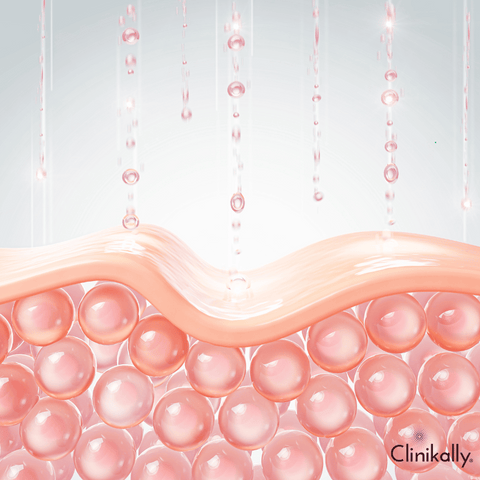
Skin cycling, also known as skin turnover, is the natural process by which the outer layer of the skin is shed and replaced with new cells. This process is essential for maintaining healthy skin, as it helps to remove dead skin cells and allows for the growth of new, healthy cells.
The rate at which the skin undergoes this process can vary depending on a number of factors, including age, genetics, and lifestyle. In general, skin turnover is faster in younger people, with the process taking about 28 days in infants and slowing down to about 30-45 days in adults.
To support healthy skin cycling, it's important to follow a healthy skincare routine that includes cleansing, exfoliating, and moisturizing. Cleansing helps to remove dirt, oil, and other impurities from the skin, while exfoliating helps to remove dead skin cells and unclog pores. Moisturizing helps to keep the skin hydrated and supple and can help to prevent dryness and flakiness.
In addition to a healthy skincare routine, there are other things you can do to support healthy skin cycling. These include:
-
Eating a healthy, balanced diet that includes plenty of fruits and vegetables, as well as essential fatty acids and vitamins.
-
Avoiding excessive sun exposure, which can damage the skin and slow down the skin cycling process.
-
Avoiding smoking, which can also damage the skin and contribute to signs of aging.
-
Using gentle skincare products that are suitable for your skin type.
-
Avoiding harsh or abrasive skincare products, as these can damage the skin and interfere with the skin cycling process.
Overall, healthy skin cycling is essential for maintaining healthy, radiant skin. By following a healthy skincare routine and making lifestyle choices that support skin health, you can help to keep your skin looking its best.
Benefits of skin cycling

-
It helps to remove dead skin cells, which can make the skin appear dull and lifeless. By shedding dead cells, skin cycling allows for the growth of new, healthy cells, which can help to give the skin a more youthful and radiant appearance.
-
It helps to unclog pores and prevent the formation of acne. As dead skin cells are shed, they can sometimes clog pores, leading to the development of pimples and other forms of acne. By promoting healthy skin cycling, you can help to prevent this from happening.
-
It helps to improve the overall health and appearance of the skin. By removing dead skin cells and allowing for the growth of new, healthy cells, skin cycling can help to improve the texture and tone of the skin, as well as reducing the appearance of fine lines and wrinkles.
-
It helps to keep the skin hydrated and supple. As new cells are produced, they help to retain moisture in the skin, which can help to prevent dryness and flakiness.
Overall, healthy skin cycling is essential for maintaining healthy, radiant skin. By supporting this natural process, you can help to keep your skin looking its best.
How to determine your skin cycling
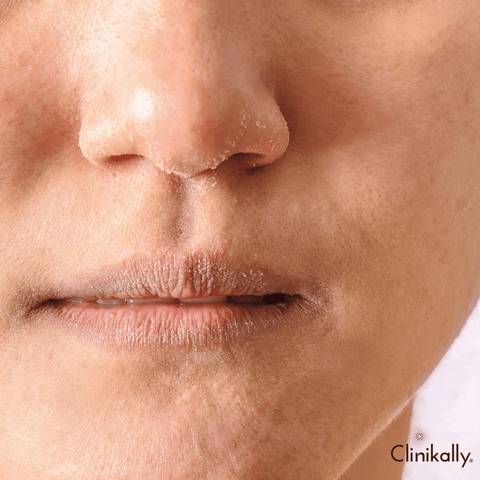
To determine your skin cycle, you can try keeping track of when your skin starts to feel dry and flaky. This is usually a sign that your skin is ready to shed its dead cells and regenerate. You can also pay attention to when you start to see new pimples or blemishes appearing on your skin, as this can also be a sign that your skin is in the process of regenerating. If you're not sure how long your skin cycle is, you can try using a moisturizer or exfoliant that is designed to help accelerate the skin regeneration process. This can help you get a better idea of how long it takes for your skin to regenerate and give you a better sense of your skin cycle.
However, if you have any concerns about your skin or if you notice any changes that worry you, it's always best to consult a dermatologist. At Clinikally, we provide online dermatologist consultation where you get personalized treatment plan based on your skin type. They can provide you with expert advice and treatment options to help keep your skin healthy and looking its best.
Boost your skin's natural cycling process
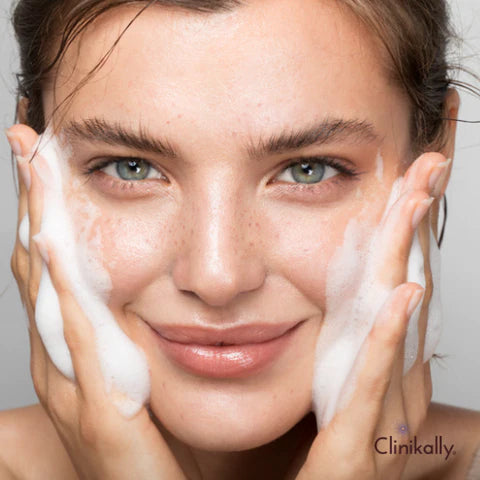
To support your skin's natural cycling process and keep your skin healthy, a dermatologist might suggest the following steps:
-
Use a gentle, non-irritating cleanser to remove dirt, oil, and makeup from your skin.
-
Exfoliate your skin regularly to help remove dead skin cells and promote cell turnover.
-
Moisturise your skin to keep it hydrated and healthy.
-
Use a sunscreen with an SPF of at least 30 every day to protect your skin from the damaging effects of the sun.
-
Avoid using harsh or drying skin care products, as they can irritate your skin and disrupt the skin cycling process.
-
Avoid touching your face too much, as this can introduce bacteria and other irritants that can lead to blemishes and other skin problems.
-
Get plenty of sleep and manage your stress levels to support your overall health and well-being, which can also benefit your skin.
If you have any concerns about your skin or if you notice any changes in your skin that worry you, it's always a good idea to consult a dermatologist. They can provide you with expert advice and treatment options to help keep your skin healthy and looking its best.
Integrating skin cycling into your skincare routine
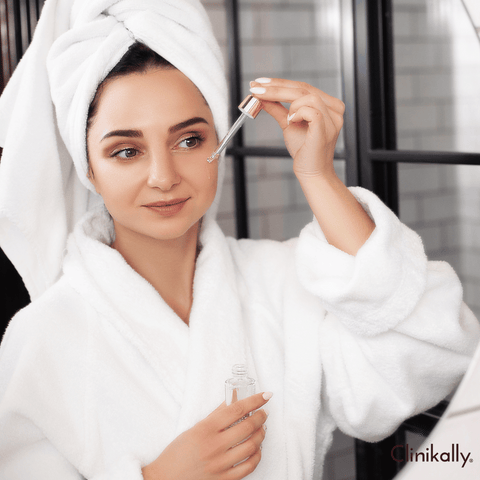
"Skin cycling" is a word that isn't widely recognised in the skincare community, and you could be referring to several concepts such as modifying your skincare routine based on the demands of your skin or adding new products on a rotational basis. Please provide more information if you have a certain word or notion in mind so that I can provide more precise guidance. Assuming you mean adjusting your skincare practice based on various factors, here are some broad recommendations for incorporating diversity into your skincare routine:
-
Understand Your Skin Type and Needs: Determine your skin type (dry, oily, combination, sensitive) as well as any specific skin concerns (acne, ageing, hyperpigmentation) to customise your routine.
-
Basic Routine: Create a basic skincare routine that includes cleansing, moisturising, and sunscreen application. These steps are necessary for everyone.
-
Targeted Treatments: Incorporate targeted treatments for specific issues. For example, if you have acne, you could include a salicylic acid-containing product. If you are concerned about fine lines, a retinol-containing product may be beneficial.
-
Rotation of Active Ingredients: Some active ingredients, such as exfoliants and retinoids, can be irritating when used daily. Consider incorporating them regularly. For example, use an exfoliant twice a week and a retinoid on alternate nights.
-
Seasonal Adjustments: The demands of your skin can change with the seasons. In the winter, a thicker moisturizer may be required, whilst, in the summer, a lighter formula may be appropriate. Make the necessary changes to your routine.
-
Listen to Your Skin: Take note of how your skin reacts to various products. Consider reducing or eliminating particular products if you detect irritation or sensitivity.
-
Hydration and Sunscreen: Staying hydrated and wearing sunscreen are essential for keeping healthy skin regardless of the items you use. These should be constants in your routine.
-
Consult with a Dermatologist: If you have specific skin problems or conditions, you should see a dermatologist. They can give you personalised advise based on your skin's specific requirements.
Remember that everyone reacts differently to skincare products, and what works for one person may not work for another. To reduce the risk of irritation, new products should be introduced gradually. Please provide more information if you have a specific notion of "skin cycling" in mind for more tailored help.
Tailoring skin cycling for different skin types
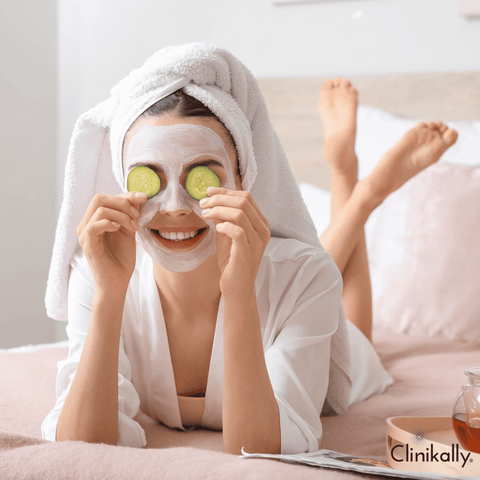
Skin cycling entails altering your skincare routine based on your skin's changing needs. Because different skin types have different properties, adjusting skin cycling to each type is critical. Here are some broad recommendations for various skin types:
-
Dry Skin: Hydrating products, such as moisturising cleansers, hyaluronic acid serums, and thick moisturisers, should be prioritised. To eliminate dead skin cells without irritating the skin, use gentle exfoliants such as lactic acid or enzymes.
-
Oily Skin: Look for products that regulate oil production without drying out the skin. Use non-comedogenic and oil-free products. Salicylic acid can be used to help reduce excess oil and prevent breakouts. Even if you have oily skin, use a lightweight, oil-free moisturiser to keep your skin hydrated without clogging your pores.
-
Combination Skin: Separately address the needs of distinct parts of the face. For dry and oily skin, use a combination of products. Consider using a lighter moisturiser to oily areas and a thicker moisturiser to dry areas.
-
Sensitive Skin: To reduce the risk of irritation, choose fragrance-free and hypoallergenic products. Introduce new products gradually, performing patch tests to ensure no adverse reactions occur. Avoid strong exfoliants in favour of calming substances like as chamomile or aloe vera.
-
Normal Skin: Maintain a well-balanced skincare routine that emphasises prevention and maintenance. Sunscreen is essential for preventing UV damage even if you have normal skin.
Skin Care Suggestions for All Skin Types:
-
Seasonal Changes: Modify your routine in response to seasonal changes. For example, in the winter, increase hydration and in the summer, adjust SPF levels.
-
Monitor Skin Changes: Pay attention to changes in your skin's condition and adjust your routine accordingly.
-
Weekly Treatments: To address specific concerns without overwhelming your daily routine, consider incorporating weekly treatments such as masks or exfoliants.
-
Professional Advice: Consult a dermatologist for personalised advice if you are unsure about your skin type or how to address specific concerns.
Keep in mind that there are individual variations within each skin type, and what works for one person may not work for another. It's important to listen to your skin, introduce new products gradually, and be consistent with your routine to see long-term benefits.
Maximizing the efficacy of skin cycling

To maximise the efficacy of skin cycling, it's critical to understand your skin's needs, stick to your routine, and make adjustments depending on seasonal, lifestyle, and skincare goals changes. Here are some pointers to make the most of your skin cycling routine:
-
Identify Your Skin Concerns: Determine whether your main skin issues are acne, ageing, hyperpigmentation, or something else. This will let you choose and rotate products.
-
Establish a Basic Routine: Create a basic skincare regimen that includes washing, moisturising, and sun protection. These procedures are essential for all skin types.
-
Rotate Active Ingredients: Use a rotating schedule when introducing active ingredients to prevent overdoing your skin. For example: Chemical exfoliants, such as alpha and beta hydroxy acids, should be used two to three times a week. To achieve anti-aging benefits, incorporate retinoids two to three times a week. Utilise vitamin C serums, particularly in the morning, to safeguard against free radical damage.
-
Consider Seasonal Adjustments: Adapt your regimen to seasonal fluctuations. Richer moisturisers may be required during the colder months, whereas lighter formulas may be appropriate during the warmer months.
-
Targeted Treatments: Targeted therapy can be used to address specific issues. Use serums or masks with substances such as niacinamide for brightening or hyaluronic acid for hydration.
-
Listen to Your Skin: Take note of how your skin reacts to various products. Adjust your regimen if you detect irritation or sensitivity. It is critical to progressively introduce new items.
-
Weekly Treatments: Incorporate weekly treatments such as masks, peels, or specialised treatments to give your skin a boost. These can treat specific issues while remaining outside of your normal routine.
-
Consistent Sunscreen Use: Sunscreen is an absolute must. Regardless of other modifications in your regimen, use it every morning. UV protection is critical for preventing skin damage and premature ageing.
-
Stay Hydrated: Internal hydration is just as important as exterior hydration. To keep your skin hydrated from within, drink plenty of water.
-
Professional Guidance: Consult a dermatologist or skincare specialist if you are unclear about the best method for your skin or require personalised advice.
-
Monitor and Adjust: Evaluate the efficacy of your routine regularly. If you're not getting the results you want, or if your skin's needs change, be willing to adapt your cycling programme.
-
Patience and Consistency: It takes time to see results. Be patient and consistent with your regimen to get long-term results.
Keep in mind that everyone's skin is different, and what works for one person might not work for another. It's critical to personalise your programme to your specific demands and make adjustments as needed.
Best practices for each phase of skin cycling
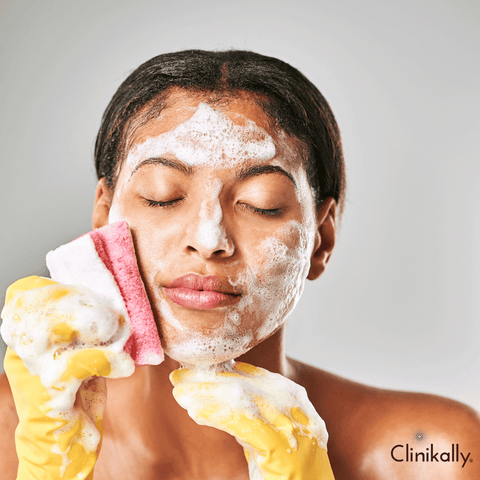
Skin cycling is altering your skincare routine based on several aspects such as the changing seasons, the demands of your skin, and specific concerns. The following are some best practices for each stage of skin cycling:
-
Assessment Phase: Determine your skin type, problems, and objectives. Examine your skin's state regularly to detect any changes or special problems.
-
Foundational Phase: Create a fundamental routine that includes a gentle cleanser, moisturiser, and sunscreen. Introduce new products gradually and conduct patch tests to rule out any negative reactions.
-
Targeted Treatment Phase: Determine specific skin issues (for example, acne, hyperpigmentation, and ageing). To address specific concerns, use focused therapies such as serums or spot treatments.
-
Rotation Phase: To avoid overexposure and discomfort, rotate active ingredients. Based on your skin's tolerance, create a schedule for exfoliants, retinoids, and other powerful substances.
-
Seasonal Adjustment Phase: Examine how your skin reacts to the changing seasons. Change your regimen to include richer formulations in the colder months and lighter ones in the hot months.
-
Hydration Boost Phase: Incorporate moisturising masks, serums, or hyaluronic acid-containing products for an added boost. Consider using a humidifier, especially if you live in a dry region or during the winter.
-
Recovery Phase: If your skin is irritated or sensitive, look for substances that soothe it, such as aloe vera or chamomile. Reduce the amount of powerful actives you use during this phase to allow your skin to recuperate.
-
Review and Adjust Phase: Regularly evaluate the efficacy of your routine. Be willing to adapt your routine if you aren't getting the results you want or if your skin's needs change.
-
Consistent Sunscreen Phase: Regardless of other modifications in your routine, emphasise the need of daily sunscreen application. Choose a sunscreen that offers both UVA and UVB protection.
-
Holistic Health Phase: Consider how diet, stress, and sleep affect your skin. Regular physical activity can help to improve overall skin health.
-
Professional Guidance Phase: If you have specific skin concerns or are unclear about the best treatment for your skin, seek professional guidance.
-
Long-Term Maintenance Phase: Maintain a consistent routine based on the needs of your skin and your established cycle. Even if your skin is in good condition, you should continue to take precautions.
Keep in mind that skin cycling is a fluid concept, and the phases can be tailored to your own needs and preferences. Always pay attention to how your skin reacts and modify your routine as needed.
Common mistakes to avoid during skin cycling
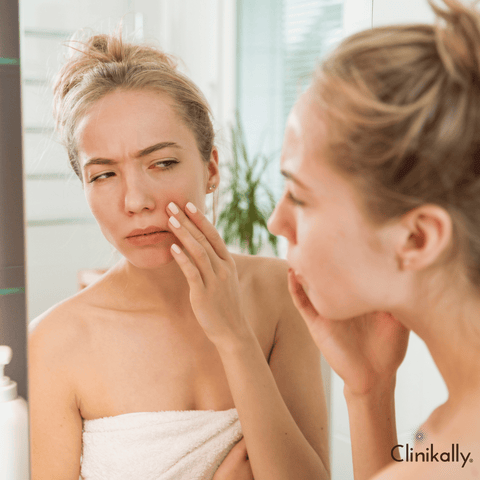
While skin cycling can be a good technique for addressing changing skincare demands, there are some typical pitfalls to avoid to optimise your skin's health and appearance:
-
Over-Exfoliation: Exfoliating too frequently or simultaneously utilising multiple exfoliating products. Follow an exfoliating programme and be careful not to overuse it. Begin with a lower frequency and progressively raise it if necessary.
-
Inconsistency: Following your skin cycle routine inconsistently. Create and stick to a regimen. Consistency is essential for achieving achievements.
-
Skipping Sunscreen: Ignoring the application of sunscreen daily. Sunscreen is essential for preventing UV damage to your skin. Regardless of other modifications in your regimen, use it every morning.
-
Ignoring Hydration: Concentrating only on active substances while ignoring hydration. Make sure to include hydrating items in your routine, especially if you're utilising active chemicals that can be drying.
-
Not Patch Testing: Introducing several new items at the same time without patch testing. Before introducing new items into your routine, patch test them to uncover any potential allergic reactions or irritations.
-
Using Too Many Products: Using too many products on your skin. Maintain a straightforward and focused regimen. Excessive product use can raise the risk of irritation.
-
Abrupt Changes: Making abrupt and significant alterations to your routine. Allow your skin to adapt by gradually introducing new products or adjusting the frequency of application.
-
Ignoring Your Skin's Signals: Ignoring symptoms of irritability or sensitivity. Pay attention to your skin. If a product causes redness, irritation, or breakouts, it should be avoided.
-
Neglecting Nutrition and Lifestyle: Ignoring the influence of diet, stress, and lifestyle on your skin. Consider your overall health. For overall skin health, eat a balanced diet, reduce stress, and get enough sleep.
-
Using Expired Products: Using skincare items that have passed their expiration date. Check the expiration dates on your products regularly and replace them as needed.
-
Not Consulting Professionals: Attempting to treat severe skin problems without first contacting a dermatologist. Seek professional help if you have chronic or severe skin problems.
-
Expecting Immediate Results: Expecting quick gratification from a new regimen. It takes time to care for your skin. Allow your skin to acclimatise and respond gradually, and be patient.
Keep in mind that everyone's skin is different, and what works for one person may not work for another. To attain the greatest results, pay attention to your skin's needs, be patient, and make modifications as needed. If in doubt, seek the advice of a skincare specialist or dermatologist.
Advanced tips for skin cycling
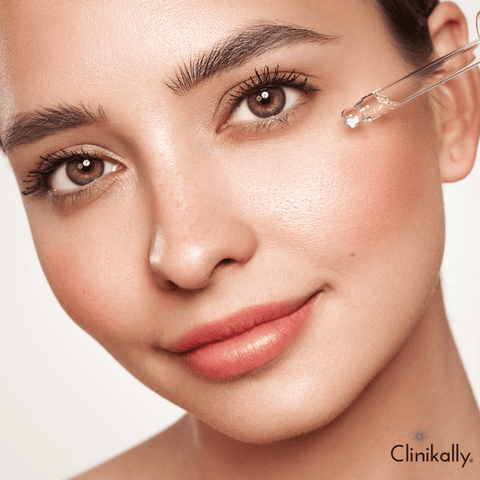
For those looking for advanced skin cycling tactics, consider integrating the following tips to improve the effectiveness of your skincare routine:
-
Customized Serums: Invest in serums that are tailored to your skin concerns. Tailor-made serums can give a concentrated blend of active chemicals tailored to your specific requirements, resulting in more targeted and effective treatments.
-
Layering Techniques: Learn how to layer skincare products. Apply products in the order of thinnest to thickest consistency. This ensures that each product is absorbed optimally and avoids any interactions between incompatible substances.
-
Cyclical Diet Considerations: Align your nutritional choices with the phases of your skin cycle. Certain nutrients, such as antioxidants and omega-3 fatty acids, can help to maintain skin health. Depending on your skin's current needs, modify your diet to incorporate foods high in these elements.
-
Periodic Professional Treatments: Include professional treatments regularly. Consider using chemical peels, microdermabrasion, or laser therapy. These can be used to supplement your home skincare routine and target certain conditions more thoroughly.
-
Microcurrent and LED Therapy: Utilise sophisticated skincare devices such as microcurrent or LED therapy. These technologies can increase collagen production, minimise fine wrinkles, and enhance skin tone overall. Use them strategically according to your skin's needs.
-
Circadian Rhythm Alignment: Align your skincare routine with your circadian rhythm. Circadian rhythms regulate certain skincare processes such as cell turnover. Adjust the timing of various goods to align with your body's natural cycles.
-
Seasonal Professional Consultations: Make appointments with skincare professionals for seasonal consultations. A dermatologist or esthetician can examine your skin's shifting demands and make recommendations for changes to your routine as the seasons change.
-
High-Frequency Treatments: Consider using high-frequency treatments. High-frequency devices can boost collagen formation, minimise acne, and enhance skin health overall. Use them sparingly depending on the condition of your skin.
-
Adaptive Skincare: Accept an adaptable skincare philosophy. Prepare to modify your routine in response to real-time assessments of your skin's state. In advanced skin cycling, adaptability and flexibility are critical.
-
Niacinamide and Peptide Combinations: For increased anti-aging advantages, combine niacinamide with peptides. Niacinamide improves skin texture and tone, whereas peptides promote collagen formation. When used simultaneously, they can boost each other's benefits.
-
Hyaluronic Acid Layering: Hyaluronic acid with varying molecular weights is layered. Hyaluronic acid in various forms can give hydration at different skin depths, providing a more comprehensive moisturising effect.
-
Temperature-Responsive Products: Look into temperature-responsive skincare. Some formulations perform better when they are warmed or cooled. Understanding the effect of temperature on product efficacy can help improve outcomes.
These advanced recommendations should be used with caution and concerning your specific skin type and issues. It's best to introduce new procedures and products gradually, paying close attention to how your skin reacts. If you are unsure, seek personalised advice from a skincare professional.
Using targeted treatments in skin cycling
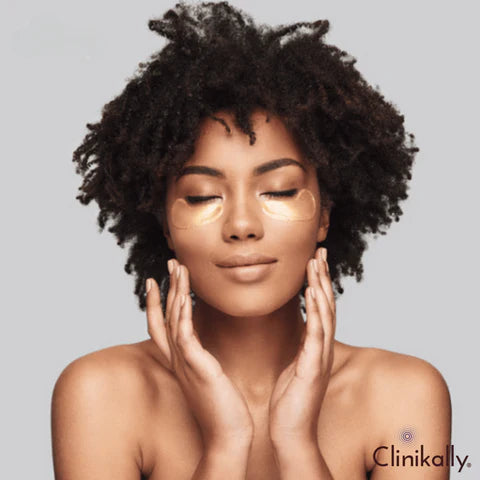
Including targeted treatments in your skin cycling programme can help you address certain issues more effectively. Here's a guide to using targeted therapies at various stages of skin cycling:
-
Assessment Phase: Determine your key skin concerns and goals. Begin with a thorough examination of your skin. If you have concerns about acne, hyperpigmentation, or ageing, make a note of them for targeted treatments in the following phases.
-
Foundational Phase: Create a simple skincare routine. Choose a mild cleanser, moisturiser, and sunscreen with broad-spectrum protection. Before introducing specific treatments, lay the groundwork.
-
Targeted Treatment Phase: Take care of specific skin issues. Introduce acne-fighting treatments containing benzoyl peroxide or salicylic acid. Hyperpigmentation should be treated with serums containing vitamin C and niacinamide. Incorporating retinoids or peptides can provide anti-aging advantages.
-
Rotation Phase: To avoid overuse, rotate active components. Schedule targeted treatments in a rotation, ensuring that each medication is taken regularly but not daily.
-
Seasonal Adjustment Phase: Change the routine according to the seasons. Depending on the effect of climate and environmental conditions on your skin, adjust the concentration or frequency of targeted treatments.
-
Hydration Boost Phase: Hydration should be increased. To maintain skin moisture balance, use hydrating masks or serums in conjunction with targeted treatments.
-
Recovery Phase: Repair and soothe the skin. Choose products that are relaxing and healing. To allow your skin to recuperate, avoid using powerful actives during this phase.
-
Review and Adjust Phase: Evaluate the routine's effectiveness. Determine whether targeted therapies are producing the anticipated results. As needed, adjust the concentration or frequency.
-
Consistent Sunscreen Phase: Make sun protection a top priority. Ascertain that targeted treatments are compatible with the usage of sunscreen. Sunscreen is essential, especially when utilising substances that may make you more sensitive to the sun.
-
Holistic Health Phase: Consider your whole lifestyle. Examine whether environmental variables such as stress have an impact on skin issues. Adjust targeted treatments as needed.
-
Professional Guidance Phase: Seek expert help if you have persistent concerns. If targeted therapies aren't yielding the desired outcomes, see a dermatologist for personalised advice.
-
Long-Term Maintenance Phase: Keep your skin in good condition. For long-term maintenance, continue to use targeted treatments as needed. Adjust according to any changes in skin problems.
Remember to carefully introduce targeted treatments, especially if they contain potent chemicals. Keep an eye on your skin's reaction, and, if irritation occurs, consider reducing the concentration or frequency. Consistency and patience are essential for achieving the best results from your skin cycling practice.
Adjusting skin cycling with seasonal changes

Adapting your skin cycling practice to seasonal changes is a deliberate method that recognises the influence of environmental conditions on your skin. Here's a tip for changing your routine according to the seasons:
-
Winter: The challenges include flakiness and dehydration from the dry, cold air. To combat dryness, use richer moisturisers. Consider using a humidifier to add moisture to the air in your home. To avoid over-drying, increase hydration but decrease the frequency of exfoliation.
-
Spring: The transition from cold to warm weather may cause an increase in oiliness. Switch to lighter moisturizers. Increase exfoliation to prevent clogged pores caused by increased oil production. As the days become brighter, make sure to apply sunscreen on a regular and ample basis.
-
Summer: Sun exposure and higher temperatures pose challenges. Choose water-based, non-comedogenic products. Continue to stay hydrated, but use caution when using excessively thick products. Use a high-SPF sunscreen first and reapply as needed during the day.
-
Fall: Cooler temperatures and potential skin dehydration pose challenges. Gradually return to using richer moisturizers after making the transition to heavier moisturizers. To repair any sun damage, introduce products that are high in antioxidants. Keep up your exfoliation routine to take care of any summertime residue.
General Seasonal Change Advice:
-
Examine Your Skin's Requirements: Assess the condition of your skin at the start of each season to identify any changes or specific concerns.
-
Consistency of Sunscreen: Sunscreen is a must-have regardless of the season. The SPF level should be adjusted based on the UV intensity.
-
Balance of Hydration: Adjust the hydration level of your products to compensate for changes in humidity.
-
Product Rotation: Rotate active ingredients according to seasonal requirements. For example, in the winter, concentrate on hydration, and in the summer, on oil control.
-
Lifestyle Considerations: Changes in activities and lifestyle (for example, more outdoor activities in the summer) may have an impact on your skincare requirements. Make the necessary changes to your routine.
-
Professional Consultation: Consider visiting a dermatologist regularly to update your routine and treat seasonal difficulties.
-
Clothing and Sun Protection: Consider how clothing changes (covering up in the winter, exposing more skin in the summer) affect your sun protection needs.
-
Adjusting Makeup: Make your makeup choices according to the season. In the summer, go for lighter formulas, while in the winter, go for moisturizing ones.
-
Special Treatments: Consider using seasonal treatments such as moisturizing masks in the winter and oil-controlling masks in the summer.
Remember that everyone's reactions to seasonal changes differ, so pay attention to your skin. Although adjustments may not be necessary for everyone, being aware of your skin's needs throughout the year might result in a more successful skincare programme.









































